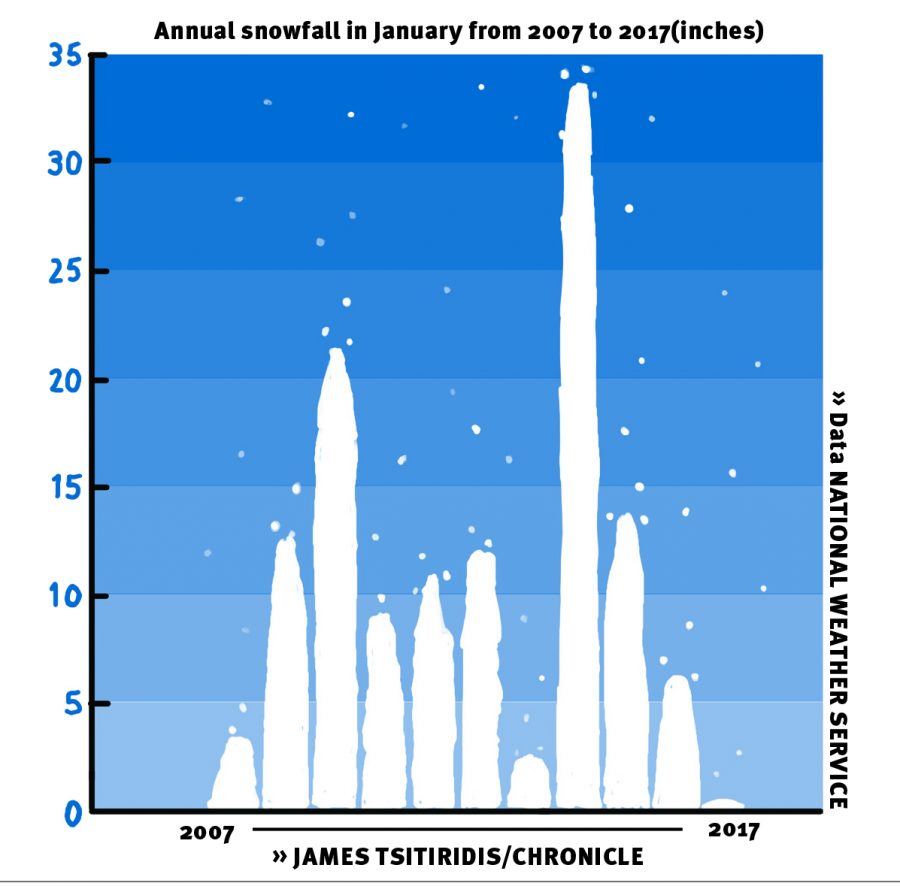What does less snow mean for Chicago?
What does less snow mean for Chicago?
February 13, 2017
“Chiberia” faced a historic month in January with a standout record of low snowfall, according to various local experts.
Chicago usually averages nine or 10 inches of snow during January, according to National Weather Service Meteorologist Kevin Birk. However, this year recorded only 0.6 inches.
The city, including the Chicago Department of Transportation, has been taking advantage of the clear roads by filling potholes—16,000 more in January 2017 than in January 2016.
CDOT noted that 15 or 16 pothole crews are out every day, and complaints about potholes from 2015–2016 were down 18 percent, according to its website. CDOT Spokeswoman Susan Hofer said the department has also been using the thawed ground to get a head start on sign installments around the city.
“Building owners and residents of various neighborhoods are seeing work that normally would have to wait until spring—being done on an as-needed basis,” Hofer said.
Only five other times in recorded Chicago weather history has January registered equal or lesser amounts of snow for the month, according to National Weather Service data. But, Birk noted Chicago has not seen any less precipitation. The city is about average for a typical January by 1.14 inches.
“Most fell in the form of rain and not snow [because] we tended to actually be fairly warm,” Birk said.
December in Chicago provided a few good snowfalls, and the majority of the snowfalls this winter happened during that month, he added.
The warmer weather can be blamed on both rising global temperatures and unreliable weather patterns, according to Max Berkelhammer, an earth and environmental sciences professor at the University of Illinois at Chicago.
“There’s simply changes in weather patterns that are associated with ocean dynamics and changes with hemisphere circulation that has a little bit of a chaotic or random quality,” Berkelhammer also said.
Another explanation is that central U.S. storms systems are moving farther to the north instead of tracking to the south, so cold air cannot filter in and let precipitation to fall as snow, Birk said.
Changes in Chicago’s environment can be expected in the upcoming months because of the low snowfall percentage in January. The city’s runoff water, pests that usually die off from the winter and the temperature of the upcoming spring and summer months can possibly be affected in the future because of the warmer temperatures and lack of snow from this past month, according to Berkelhammer. He has also noticed flooding around streets, possibly caused by precipitation falling as rain instead of snow.
“A heavy freeze on the lake surface can maintain cooler temperatures into the spring and summer,” Berkelhammer said. “The fact the lake isn’t frozen may influence spring and summer temperatures.”








